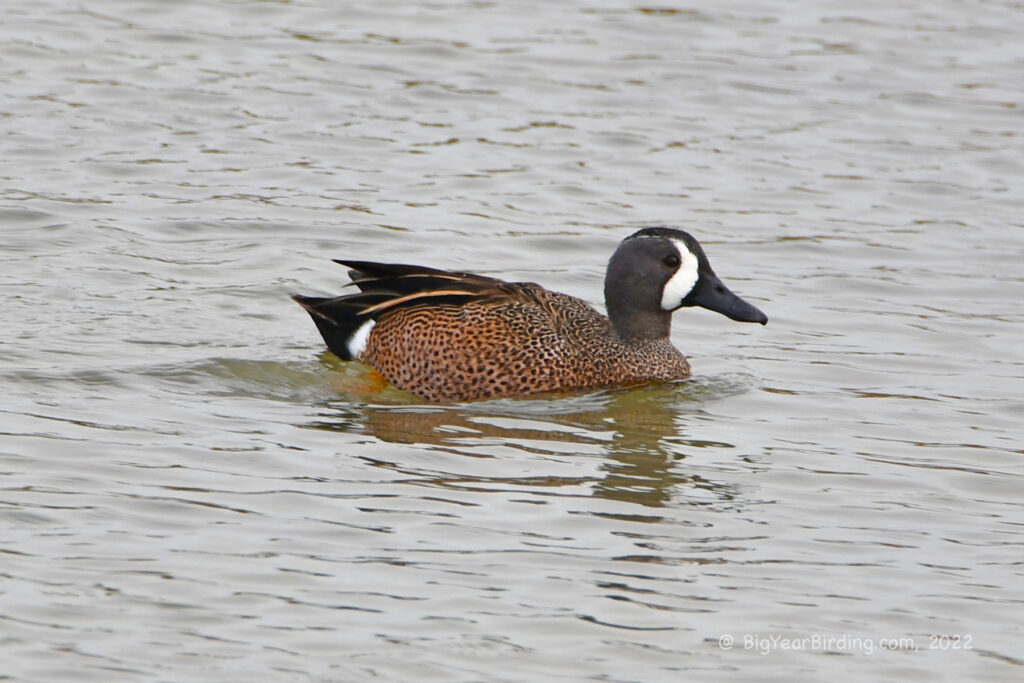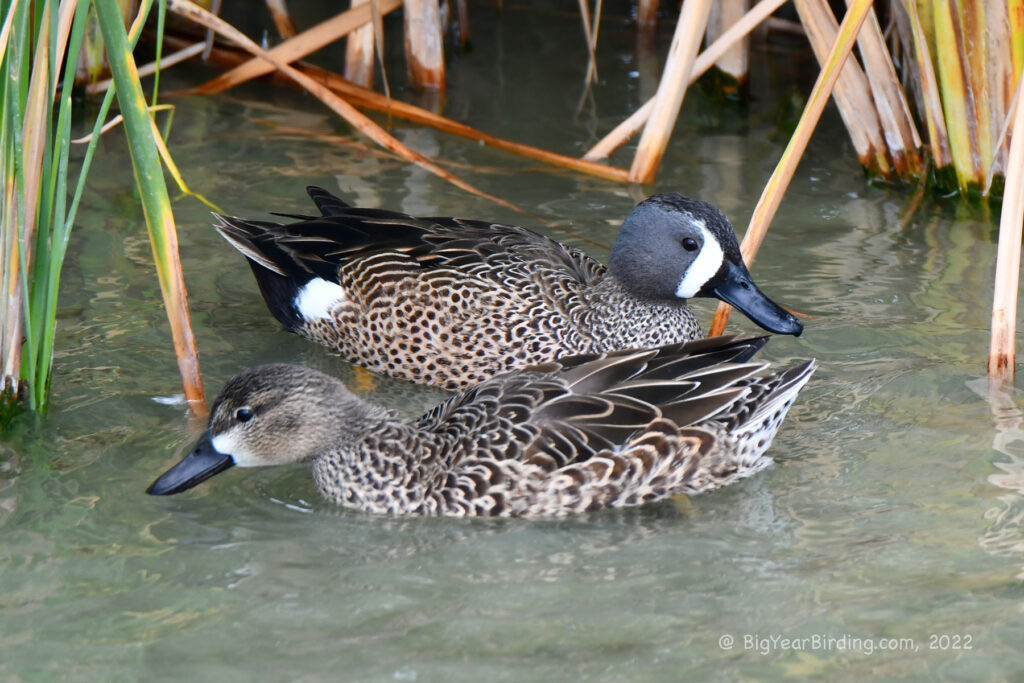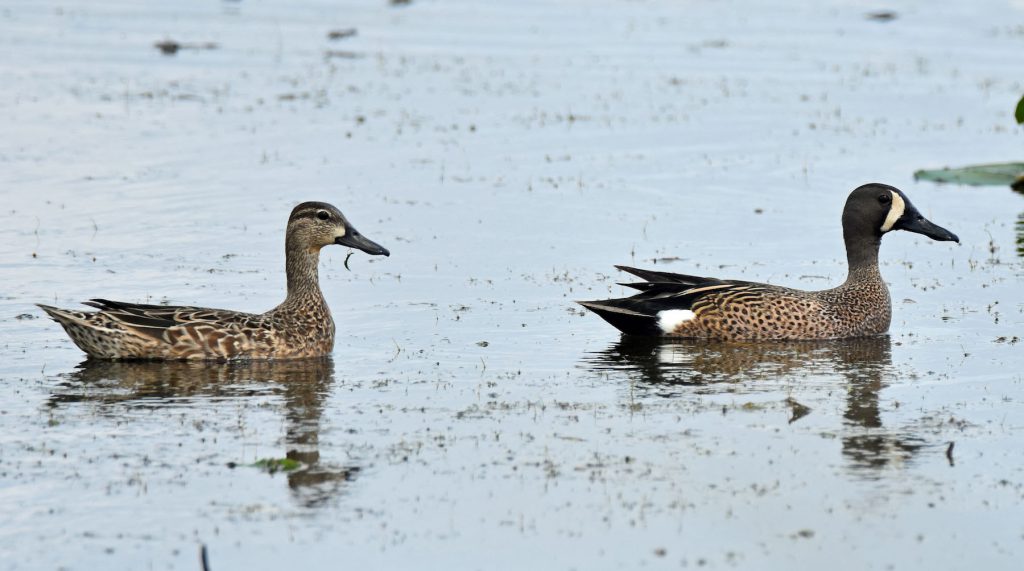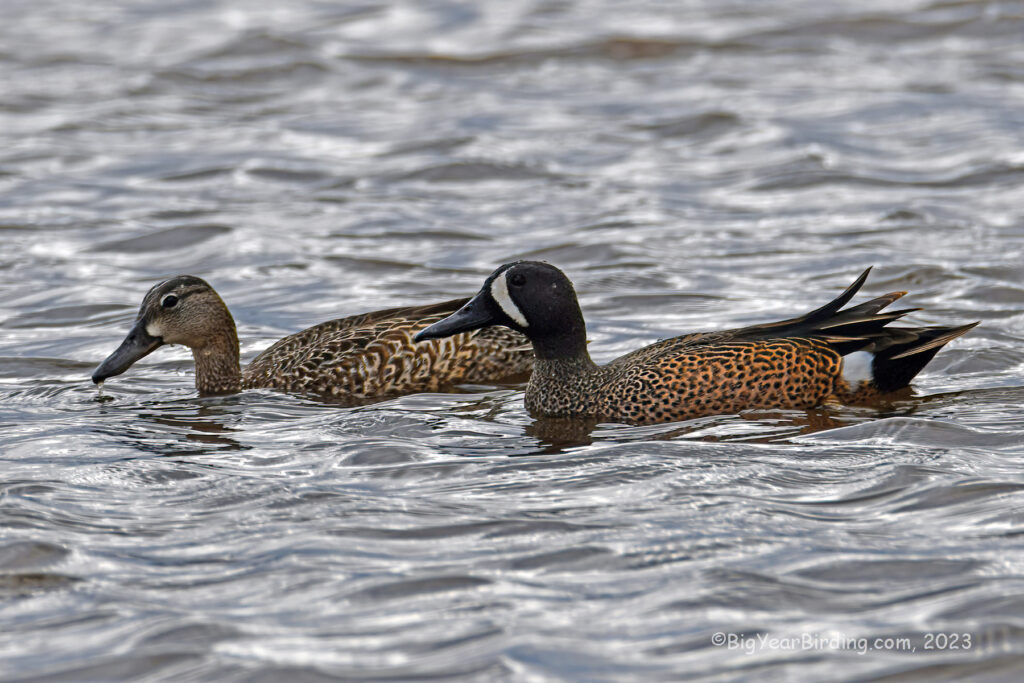
The Blue-winged Teal (Spatula discors) is a small dabbling duck found in North America. They measure about 16-19 inches in length and weigh between 0.5 to 0.8 pounds. Males are slightly larger and more colorful than females, with a bright chestnut-colored head, a white crescent on their face, and a blue-gray bill. They have a distinctive iridescent green patch on their wings that is visible in flight or when the wings are spread. Females are mottled brown with a darker crown and a speckled breast.

During breeding season, Blue-winged Teals can be found in the prairies and parklands of North America, ranging from central Canada to the United States Gulf Coast. They prefer to breed in shallow wetlands with tall vegetation such as marshes, bogs, and ponds. In the winter, they migrate south to Central and South America, where they can be found in coastal wetlands, shallow freshwater ponds, and rice fields.
Blue-winged Teals are one of the earliest migrants to leave their breeding grounds in the fall. They begin their journey as early as August and September, with most birds reaching their wintering grounds by November. They return to their breeding grounds in March and April, making them one of the first ducks to arrive in the spring. They migrate in flocks, often stopping in wetlands and ponds along the way to rest and feed.
In terms of diet, Blue-winged Teals are omnivores, feeding on aquatic plants, seeds, and insects. During breeding season, they also consume small invertebrates such as snails, crustaceans, and aquatic insects. They forage by dabbling in shallow water or by grazing on land. Blue-winged Teals are an important game bird and are hunted in many parts of North America.

Overall, the Blue-winged Teal is a small but striking duck with distinctive field marks, making it easy to identify in the field. They have a unique migration pattern, with an early departure from their breeding grounds and an early arrival in their wintering grounds. Blue-winged Teals are a beautiful and important species in North America, playing an important role in wetland ecosystems and providing a source of food for humans and other wildlife.

